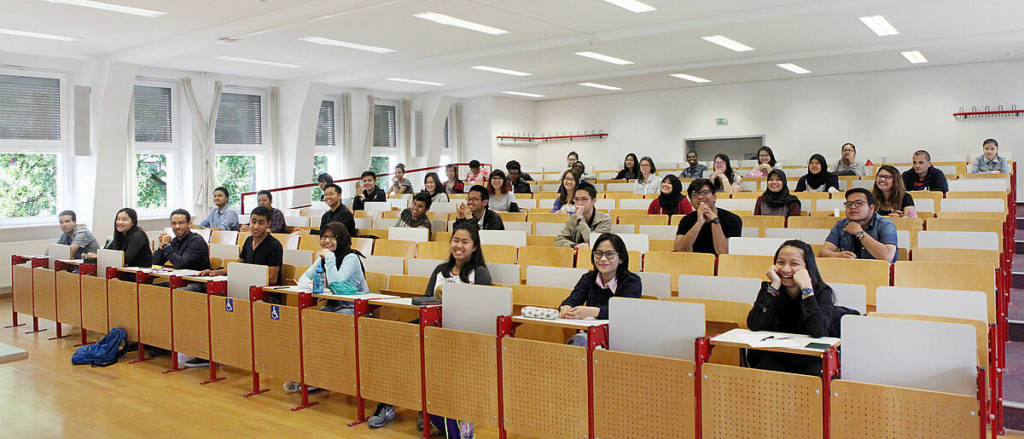
The German educational system is renowned for its complexity, rigorous standards, and a strong focus on academic and vocational training. It’s a system that has produced some of the world’s greatest minds, but it’s also known for being demanding and highly structured. In this article, we will explore the intricacies of the German educational system, shedding light on the various stages, types of schools, grading systems, and the challenges faced by students. This comprehensive guide will provide a clearer understanding of the difficulties within the German education system and help readers gain a thorough grasp of what makes it unique.
1. Overview of the German Educational System
The German educational system is divided into different stages, each with its own set of rules and standards. The system is decentralized, meaning that each of the 16 federal states in Germany has its own education policies, which can lead to variations in how education is delivered across the country. However, certain national regulations ensure a degree of consistency, particularly regarding curriculum and examinations.
The educational journey in Germany is typically divided into the following stages:
- Kindergarten (pre-school, non-compulsory)
- Grundschule (Primary school, grades 1-4 or 1-6)
- Secondary Education (comprising different types of schools such as Gymnasium, Realschule, and Hauptschule)
- Higher Education or Vocational Training
The structure might appear straightforward, but the complexity lies in the differentiation that happens early on, with students being placed into different educational tracks based on their academic performance and interests.
2. Primary Education in Germany (Grundschule)
Grundschule is the first step in formal education for German students, typically starting at the age of six and lasting for four years (grades 1-4) in most states. In some federal states, however, Grundschule extends to six years.
During this stage, children receive a general education covering subjects like German language, mathematics, social studies, and basic science. Grundschule focuses on developing fundamental skills such as reading, writing, and arithmetic.
The transition from primary to secondary education can be one of the most challenging aspects of the German educational system. At the end of Grundschule, students are evaluated and placed into different types of secondary schools based on their academic performance and recommendations from their teachers. This early streaming can have long-term effects on a student’s educational path and future career options.
3. Secondary Education in Germany
The secondary education system in Germany is perhaps the most complicated and challenging aspect of the educational journey. After completing Grundschule, students are assigned to one of several types of secondary schools, depending on their academic abilities and career aspirations. The main types of secondary schools are:
- Hauptschule: A school for students who may be more inclined towards vocational training. It prepares students for practical professions, often in manual labor or trade. The academic load is generally lighter, but the curriculum includes both general education and vocational subjects. Students typically attend Hauptschule for five or six years, after which they can enter an apprenticeship or further vocational training.
- Realschule: This school is more academically rigorous than Hauptschule but less so than Gymnasium. Realschule prepares students for mid-level white-collar jobs or for further vocational education. It lasts until grade 10, and students may pursue advanced vocational training or, in some cases, transition to a Gymnasium to complete their Abitur (university entrance exam).
- Gymnasium: The most academically demanding type of secondary school, Gymnasium is designed for students who are aiming for higher education. It covers grades 5 to 12 or 13, depending on the state, and culminates in the Abitur, a qualification necessary for attending university. Gymnasium students face a broad and challenging curriculum that includes subjects like mathematics, natural sciences, literature, languages, and social studies.
- Gesamtschule: A comprehensive school that combines elements of Hauptschule, Realschule, and Gymnasium. Students of different academic abilities are taught under one roof, and they can choose different educational paths depending on their performance.
The decision about which school a child will attend is usually made around the age of 10, based on academic performance and teacher recommendations. This early selection process can create pressure for both students and parents, as it largely determines the student’s future educational and career trajectory.
4. Challenges of the Early Selection Process
One of the most criticized aspects of the German educational system is its early selection process. By the age of 10 or 12 (depending on the federal state), students are placed into different types of secondary schools that are tailored to their academic abilities. Critics argue that this system is too rigid and that it places immense pressure on young students who may not be ready to make such significant decisions about their future.
Moreover, there is concern that this system perpetuates social inequality. Children from higher socioeconomic backgrounds are more likely to be recommended for Gymnasium, while those from lower-income families often end up in Hauptschule or Realschule. This streaming can limit opportunities for social mobility and create barriers for students from disadvantaged backgrounds.
In recent years, some states have introduced reforms to address these concerns by offering more flexible options for students to switch between different school types if their academic performance improves. However, the early selection process remains a defining and often difficult aspect of the German educational system.
5. Higher Education and Vocational Training
After completing secondary education, students in Germany have two main options: entering higher education or pursuing vocational training.
- University (Universität) and Universities of Applied Sciences (Fachhochschule): Students who have successfully completed the Abitur are eligible to apply for university. German universities are known for their rigorous academic standards, and students are expected to be highly self-disciplined and motivated. The workload can be intense, especially in fields like engineering, medicine, and law. The structure of university courses is less rigid than in other countries, with students having more freedom to choose their subjects and pace their studies. This can be both an advantage and a challenge, as it requires strong time-management skills.
- Dual Vocational Training (Duales Ausbildungssystem): Germany is famous for its dual system of vocational training, which combines classroom learning with on-the-job training. This system allows students to gain practical work experience while studying for a qualification. Vocational training is a highly respected path in Germany, and it offers a direct route into skilled employment. However, the workload can be demanding, as students must balance their time between school and work.
6. Grading System in Germany
The German grading system is another area that can be challenging for students. Grades range from 1 to 6, with 1 being the highest (excellent) and 6 being the lowest (unsatisfactory). Here’s a breakdown of the grading scale:
- 1 – Sehr gut (Very good): Excellent performance with only minor mistakes.
- 2 – Gut (Good): Solid performance with some errors.
- 3 – Befriedigend (Satisfactory): An acceptable performance with noticeable errors.
- 4 – Ausreichend (Sufficient): Meets the minimum requirements but with significant errors.
- 5 – Mangelhaft (Insufficient): Does not meet the requirements, but some effort is visible.
- 6 – Ungenügend (Fail): Fails to meet the basic requirements.
This grading system can be tough, especially for students aiming for the Abitur, where high grades are necessary for university admission. Even small mistakes can significantly impact a student’s overall performance.
7. Examinations and Testing
German students face a variety of tests and examinations throughout their educational journey. The most important exam is the Abitur, which students take at the end of Gymnasium. The Abitur is a comprehensive exam covering a range of subjects, and it plays a crucial role in determining university admission. It is considered one of the most challenging exams in the German educational system.
In addition to the Abitur, students are regularly tested through written exams, oral examinations, and project work. The frequency and difficulty of these tests can vary depending on the type of school and the state.
8. Challenges for International Students
For international students, adapting to the German educational system can be particularly challenging. Language is often the biggest barrier, as most schools and universities teach in German. While there are some international schools and universities that offer programs in English, fluency in German is usually required for most courses.
International students must also adapt to the different teaching styles, grading systems, and the high expectations placed on self-discipline and independence in German universities. However, Germany is a popular destination for international students due to its high-quality education and affordable tuition fees.
9. Reforms and the Future of the German Educational System
In recent years, there have been ongoing discussions about reforming the German educational system to make it more inclusive and adaptable to the needs of a changing society. Some of the proposed reforms include:
- Greater flexibility in the early selection process: Allowing students more opportunities to switch between different types of schools as their academic abilities evolve.
- Reducing the pressure of standardized testing: Reforming the Abitur and other standardized exams to reduce stress and provide a more holistic evaluation of student abilities.
- Improving digital education: The COVID-19 pandemic highlighted the need for better digital infrastructure in schools, and there has been a push to integrate more technology into the classroom.
- Enhancing support for disadvantaged students: Addressing the inequalities that exist in the system by providing more resources and support for students from low-income backgrounds.
While the German educational system has many strengths, it is also facing challenges as it seeks to evolve and remain competitive in a globalized world.
Conclusion
The German educational system is complex, structured, and can be difficult for students, especially due to its early selection process and rigorous academic standards. However, it offers a wide range of opportunities for both academic and vocational success. The system’s emphasis on high-quality education and vocational training has made it one of the most respected in the world.
While there are certainly challenges, particularly in terms of social mobility and flexibility, ongoing reforms aim to make the system more inclusive and adaptable. Whether you are a student navigating the German system or a parent looking to understand it better, this guide provides a comprehensive overview of the key aspects, challenges, and opportunities within German education.


